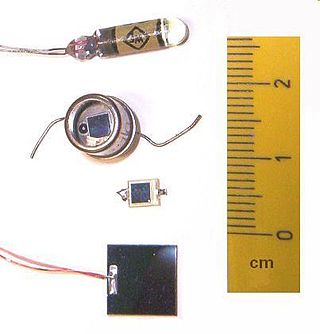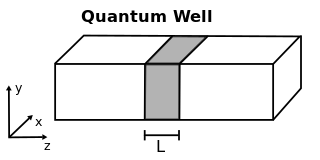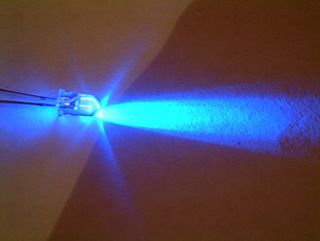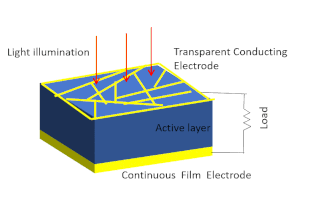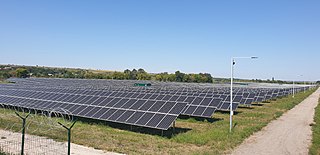Reciprocity between the photovoltaic quantum efficiency and the electroluminescence spectrum of a pn-junction diode

The photovoltaic quantum efficiency is a spectral quantity that is generally measured as a function of photon energy (or wavelength). The same is true for the electroluminescence spectrum of a light emitting diode under applied forward voltage . Under certain conditions specified below, these two properties measured on the same diode are connected via the equation [1]
- (1)
where is the black body spectrum emitted by a surface (the diode) into the hemisphere above the diode in units of photons per area, time and electron interval. In this case the black body spectrum is given by
where is the Boltzmann constant, is the Planck constant, is the speed of light in vacuum, and is the temperature of the diode. This simple relation is useful for the analysis of solar cells using luminescence-based characterization methods. Luminescence used for characterization of solar cells is useful because of the ability to image the luminescence of solar cells and modules in short periods of times, while spatially resolved measurements of photovoltaic properties (such as photocurrent or photovoltage) would be very time-consuming and technically difficult.
Equation (1) is valid for the practically relevant situation, where the neutral base region of a pn-junction makes up most of the volume of the diode. Typically, the thickness of a crystalline Si solar cell is ~ 200 μm while the thickness of the emitter and space charge region is only on the order of hundreds of nanometers, i.e. three orders of magnitude thinner. In the base of a pn-junction, recombination is typically linear with minority carrier concentration over a large range of injection conditions and charge carrier transport is by diffusion. In this situation, the Donolato theorem. [2] is valid that states that the collection efficiency is related to the normalized minority carrier concentration via
where is a spatial coordinate and defines the position of the edge of the space charge region (where the neutral zone and the space charge region connect). Thus, if , the collection efficiency is one. Further away from the edge of the space charge region, the collection efficiency will be smaller than one depending on the distance and the amount of recombination happening in the neutral zone. The same holds for the electron concentration in the dark under applied bias. Here, the electron concentration will also decrease from the edge of the space charge region towards the back contact. This decrease as well as the collection efficiency will be approximately exponential (with the diffusion length controlling the decay).
The Donolato theorem is based on the principle of detailed balance and connects the processes of charge carrier injection (relevant in the luminescent mode of operation) and charge carrier extraction (relevant in the photovoltaic mode of operation). In addition, the detailed balance between absorption of photons and radiative recombination can be mathematically expressed using the van Roosbroeck–Shockley [3] equation as
Here, is the absorption coefficient, is the radiative recombination coefficient, is the refractive index, is the intrinsic charge carrier concentration. A derivation of equation (1) can be found in ref. [1]
The reciprocity relation (eq. (1)) is only valid if absorption and emission is dominated by the neutral region of the pn-junction shown in the adjacent figure. [4] This is a good approximation for crystalline silicon solar cells and the method can also be used for copper indium gallium selenide solar cells. However the equations has limitations when applied to solar cells where the space charge region is of comparable size to the total absorber volume. This is the case for instance for organic solar cells or amorphous Si solar cells. [5] The reciprocity relation is also invalid if the emission of the solar cell is not from delocalized conduction and valence band states as would be the case for most mono and polycrystalline semiconductors but from localized states (defect states). This limitation is relevant for microcrystalline and amorphous silicon solar cells. [6]



























